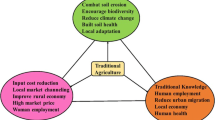Abstract
We analyzed the escalating man-animal conflict due to changing cropping pattern in Talala sub-district on the periphery of Gir National Park and Sanctuary (GNPS), Gujarat, India. Sugarcane and mango cultivation has increased by 87% and 103% respectively within eight years from 1992 to 1999. Straying of lions (Panthera leo persica) and leopards (Panthera pardus) increased to 55% and 46% respectively from 1997 to 1999. Significant correlations between the increases in sugarcane cultivation and mango orchard with straying of lions (r = +0.827, df 2) and leopards (r = +0.981, df 2) were observed. From 1990 to 1998, of the total of 11 lions rescued, eight (72%) were from farmlands and of 32 leopards rescued, ten (31%) were from farmland. Ten lions (91%) and five leopards (41%) were found dead in farmlands. Thirteen lion attacks (72%) took place in farmlands, of which 10 were specifically reported, from sugarcane and mango cultivation. Fifty-nine percent of the leopard attacks (resulting in four deaths) were recorded from farmlands. Livestock kills taking place in farmland have increased by 150% within two years from 1998 to 1999. Sugarcane and groundnut cultivation in the adjoining areas also suffer from damage due to increased movement of wild ungulates and wildboar.
Similar content being viewed by others
REFERENCES
Anon.(1995). District census handbook, Gujarat, Series 7, 1994–1995, Amerli and Junagadh District. Government of Gujarat.
Blair, J. A. S., Boon, G. G., & Noor, N. M. (1979). Conservation or cultivation: The conformation between the Asian elephant and land development in peninsular Malaysia. Land development digest, 2, 27–59.
Chakrabarty, K. (1992). Man-eating tigers. Darbari prokasan, Calcutta.
Chandra, J. (1994). Crop damage caused by Blackbucks at Karera Great Indian Bustard sanctuary and its possible remedial solutions. Proceedings of workshops on wildlife damage problems and control, 2–7 February, Wildlife Institute of India, Dehradun.
Chauhan, N. P. S., & Singh, R.V. (1990). Crop damage by over abundant population of bluebull and black buck in Haryana (India) and its management. Proc 14th Vert. Pest. Conf. (eds. L.R. Davis & Marsh, R.E.), University of California, Davis.
Chellam, R., & Johnsingh, A. J. T. (1993). The management of Asiatic lions in the Gir forest, India. Symposia of the Zoological Society, 65, 409–424.
Easa, P. S., & Sankar, S. (1999). Study on man-animal interaction in Wayanad wildlife sanctuary, Kerela. KFRI. Publication. Peechi. Kerela state.
Fenton, L. L. (1909). The Kathiawar lion. Journal of Bombay Natural History Society, 19, 4–15.
Fox, J. L. (1997). Conflict between predator and people in Ladakh. Cat news. No. 27:18P.
Jackson, P., & Nowell, K. (1996). Problems and possible solution in management of felid predation. Journal of Wildlife Research, 1(3), 304–314.
Johnsingh, A. J. T., Chellam, R., & Sharma, D. (1998). Prospects for conservation of the Asiatic lion in India. Biosphere Conservation 1(2), 81–89.
Joslin, P. (1984). The environmental limitations and future of the Asiatic lion. Journal of Bombay Natural History Society, 81(3), 649–664.
Khushwah, R. B. S. (1990). The past and present problems of man-eating tigers with regards to past stock lifting and man killing of tigers. PG. Dipl. in wildlife management. Wildlife Institute of India, Dehradun.
Murthy, S. (1994). A case study on man-animal conflict in Madhya Pradesh, India and its resolution. Proceedings of workshop on wildlife damage problems and control. 2–7 Feb. 1994. Wildlife Institute of India, Dehradun.
Nagothu, U. S. (1998). Crop and livestock depredation caused by wild animals in protected area. The case of Sariska tiger reserve, Rajasthan. Environmental Conservation 25(2), 160–170.
Panwar, H. S., & Sale, J. B. (1986). The National wildlife action plan. Indian Forester, 112(10).
Rajpurohit, L. S. (1993). Bluebull (Boselaphus tragocamelus) depredation on crop field and other mammalian pests around Jodhpur. Proceedings of the National Symposium on Unconventional Pests: Control vs conservation. Bangalore: University of Agriculture Science, Bangalore.
Rajyagor, S. B. (1975). District Gazetteer, Junagadh. Gujarat state. Government of Gujarat.
Saberwal, V. K., Gibbs, J.P., Chellam, R., and Johnsingh, A.J.T. (1994). Lion-Human conflict in the Gir Forest, India. Conservation Biology, 8(2), 501–507.
Sale, J. B., and Berkmuller, K. (1988). Manual of wildlife techniques for India (1988). Field documents No. 11. Wildlife Institute of India-FAO of United Nations.
Sawarkar, V. B. (1979). Study of some aspect of predation on domestic livestock by tigers in Melghat tiger reserve. International Symposium on Tiger (ISOT). New Delhi.
Sawarkar, V. B. (1986). Animal damage: Predation on domestic livestock by large carnivores. The Indian Forester, 112, 858–866.
Shahi, S. P. (1982). Report of Grey wolf (Canis lupus pallipes sykes) in India—a preliminary survey. Journal of Bombay Natural History Society, 79, 493–502.
Singh, H. S., and Kamboj, R. D. (1996). Biodiversity Conservation Plan for Gir (Vol. I and Vol. II). Forest Department, Gujarat State.
Singh, M., & Raval, P. P. (2000). Crop damage by Wild ungulates around Gir protected area—A report. Gir National Park and Sanctuary. Forest department. Gujarat State.
Sinha, S.P. (2000). Man-animal conflicts in and around the Gir protected area—A report, Gir National Park and Sanctuary, Forest Department, Gujarat State.
Sinha, S. P., & Shah, N. (2000). Review of literature on Man-animal conflict in and around protected areas. Gir National Park and Sanctuary, Forest department, Gujarat State.
Soni, V. C. (2000). Study of Satellitic population of Asiatic Lion, 2000—A report. Gir National Park and Sanctuary, Forest Department, Gujarat State.
Srivastav, A., Meena, R. L., Kamboj, R. D., Singh, M., Raval, P. P., and Parmar, M. (1998). Lion Meta population of Gir—A report on transect survey. The Indian Forester, 124(10), 771–782.
Stracey, P. P. (1960). Wildlife Management in India. Government of India. Ministry of food and agriculture.
Sukumar, R. (1996). Wildlife-human conflict in India—An Ecological and Sociological Perspective. Eco-Development for Biodiversity Conservation. Dehradun, India: Wildlife Institute of India.
Author information
Authors and Affiliations
Rights and permissions
About this article
Cite this article
Vijayan, S., Pati, B.P. Impact of Changing Cropping Patterns on Man-Animal Conflicts Around Gir Protected Area with Specific Reference to Talala Sub-District, Gujarat, India. Population and Environment 23, 541–559 (2002). https://doi.org/10.1023/A:1016317819552
Issue Date:
DOI: https://doi.org/10.1023/A:1016317819552




